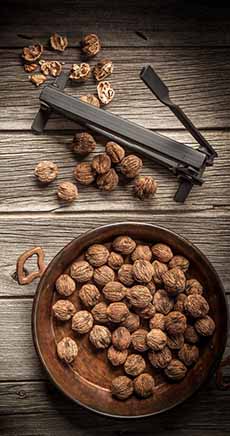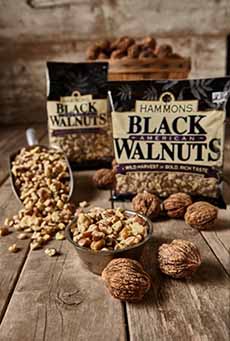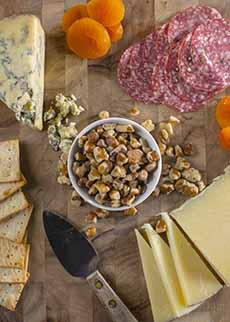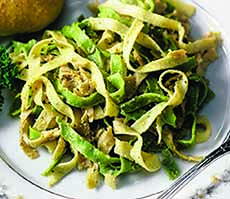Consider American Black Walnuts On National Walnut Day
|
|
May 17th is National Walnut Day. Walnuts may be the healthiest of the seven heart-healthy nuts. Here’s the scoop. The conventional walnut in the U.S. is the English walnut (also called the Persian walnut*). But what about that other, little-known, wild American walnut, the walnut? The taxonomical difference is in the footnote* below. > The history of walnuts. Most of us know little or nothing about the American black walnut. Growing wild in Missouri and much of the eastern U.S., they were a part of many indigenous peoples’ diets at one time. These days, they’re below the radar, cultivated in just a few states. More expensive to produce than the standard English walnut, black walnuts have become a specialty item for those in the know. In addition to the expense of production, there is less meat per nut, as you can see in photo #2. Another reason they fell out of favor: Black walnuts are truly a hard nut to crack, sporting extremely hard shells. Cracking black walnuts by hand can also result in stained hands. But fear not: Commercial growers use large steel wheels to crack the nuts. While subject to irrigation and some mechanical harvesting, the trees themselves are uncultivated—they have not been modified in any way over the years. American black walnuts truly are the wild cousin† of the cultivated English walnut. The American Black Walnut Marketing Board is hoping that more outreach will convince people to try them. For the flavor! Black walnuts have a heartier, earthier, more robust taste than English walnuts, and you’ll notice the difference as soon as you taste one. They showed themselves brilliantly in the Toll House Cookie recipe, which is a favorite in our house. We’ve been happily using them to replace English walnuts everywhere. However, because the flavor is different, you can’t count on substituting them 1:1 in recipes for baking and cooking, without affecting the recipe outcome. It’s best to start with tested recipes from black walnut websites like the American Black Walnut Marketing Board and Hammons . We’d prefer them even if they weren’t more nutritious—and given the nutrition of English walnuts, that’s a lot of extra nutrition! GET YOUR BLACK WALNUTS FROM HAMMONS Add culinary zest to your favorite foods with shelled walnuts. The black walnut oil is a real treat as a finishing oil for vegetables, salads, and fish dishes, and for vinaigrettes. There are also gift tins, snacks, and confections. There are plenty of recipe ideas on the website, should you need culinary inspiration. Head to Shop.Black-Walnuts.com. *The tree originated in the Middle East and these Persian walnuts became known as English walnuts. That’s because English merchant ships would trade them around the world, so they became commonly known as English walnuts. The English walnut and the Persian walnut are the same walnuts [source]. †All walnuts are members of the order Fagales an order of trees and shrubs, in the family Juglandaceae, the plant family known as the walnut family. The genus is Juglans, and that’s where the two walnuts split off. The Persian or English walnut is Juglans regia. The black walnut, also known as the American black walnut and the Eastern black walnut, is Juglans nigra. Here’s more about taxonomy, the branch of science concerned with the classification of organisms. The Latin name, Juglans, derives from Jovis glans, “Jupiter’s acorn”—figuratively, a nut fit for a god. There are 21 species in the genus that range across the north temperate Old World from southeast Europe east to Japan, and more widely in the New World from southeast Canada west to California and south to Argentina. There are five native walnut species in North America: black walnut, butternut, Arizona walnut and two species in California. The two most commonly found walnuts found in native locations are the black walnut and butternut [source]. |
|
|
|
||






